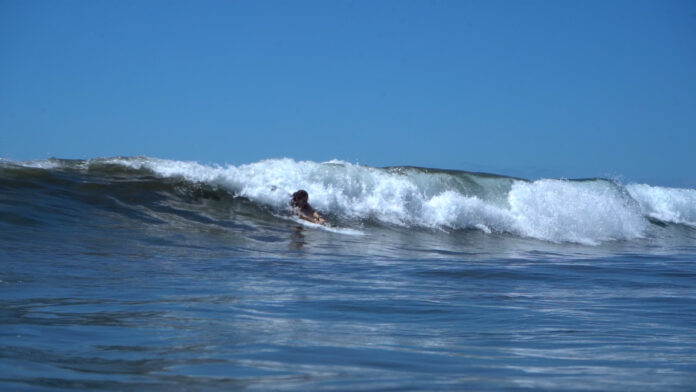Bodysurfing is the perfect exercise for anyone looking to gain confidence in the ocean and connect with mother nature. It is also the ideal prerequisite skill for learning how to surf.
For beginner bodysurfers, the goal should be to get your wave count up, build muscle memory, and learn how to read, catch, and ride breaking “green” waves.
The best and easiest way to learn how to bodysurf is by using the Grom Soft Top Handboard made by Slyde Handboards.
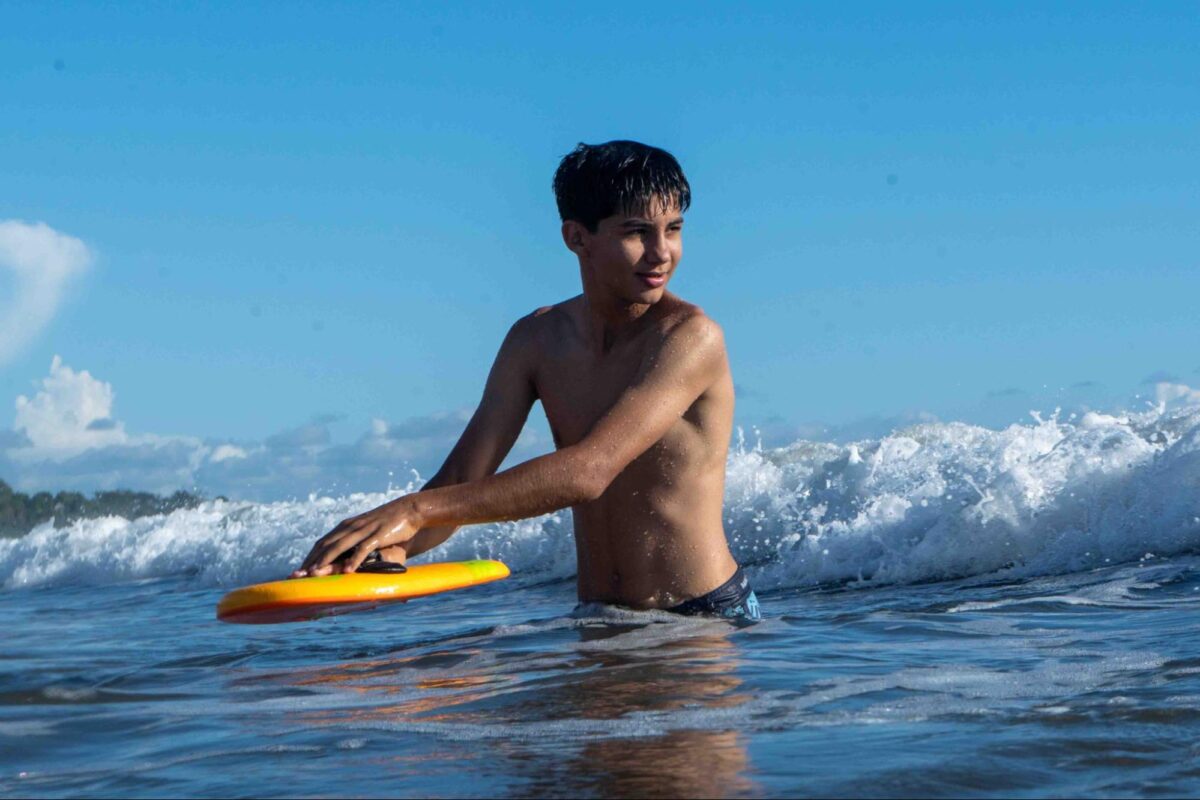
What I like most about this bodysurfing handplane is its high volume and wide planing surface, which allows you to catch more waves and ride them longer. Plus, the handboard is made of foam, making it light and safe to use (especially for kids!).
This piece of bodysurfing equipment is a real must-have, and I always use it when teaching newbies how to ride waves at Bodhi Slide bodysurf camp in Costa Rica.
How to Bodysurf with a Handboard in the White Water
When learning how to bodysurf, the first step is to master riding white water waves in the streamline position with a handboard (you can leave your swim fins on the beach for now).
Standing in thigh-deep water, keep your eyes on the horizon and look for a bigger wave breaking far away from you. By the time the wave gets to you, it should be a powerful wall of white water.
Once you identify a good ledge of white water approaching, turn toward the shore and continue to watch the wave over your shoulder with the handboard extended out in front of you.
Just before the wall of white water hits your backside, bring your chest down to the water, reach the handboard out in front of your body, and push off the seafloor as you gently launch yourself into the oncoming wave.
Don’t forget to take a couple flutter kicks with your feet at the surface of the water in order to create forward momentum and catch the wave properly.
In the streamline position, the goal is to keep your entire body flat without sinking or diving so that you are skimming the surface of the water as you ride.
Focus on keeping your body rigid like a surfboard by stretching the handboard out in front of you and allowing the ledge of white water to push you toward shore.
Once you have mastered the streamline position in the white water, you can head back to the beach and grab a pair of swim fins to use with the Slyde Grom handboard.
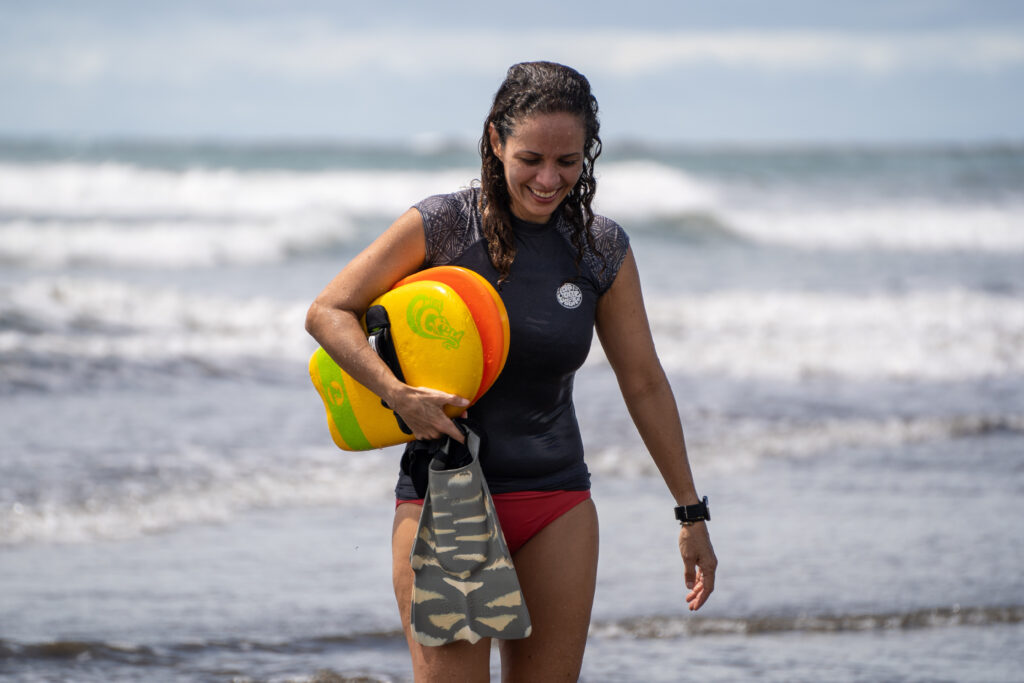
Bodysurfing Green Waves with Handboard + Swim Fins
As you get more comfortable navigating the shallow water zone with fins, you can experiment with swimming out a little deeper and kicking into waves rather than launching into them from your feet.
The Slyde Grom handboard is a great tool for learning how to kick properly using swim fins—essential equipment for intermediate/advanced bodysurfers swimming out to the green wave zone.
Swimmers use kickboards to train their legs and improve their swimming ability—the Grom handboard works in the same vein. Float the handboard out in front of you to conserve your energy as you kick (rather than swim) out to the lineup.
When kicking out through the impact zone, keep your eyes on the horizon to avoid getting pummeled by the oncoming waves.
You will have to duck dive under the waves coming at you by shifting your weight forward and sinking the handboard underwater. Bring your butt up to the surface and then dive straight down getting as deep as you can to escape the impact of the breaking wave above you.
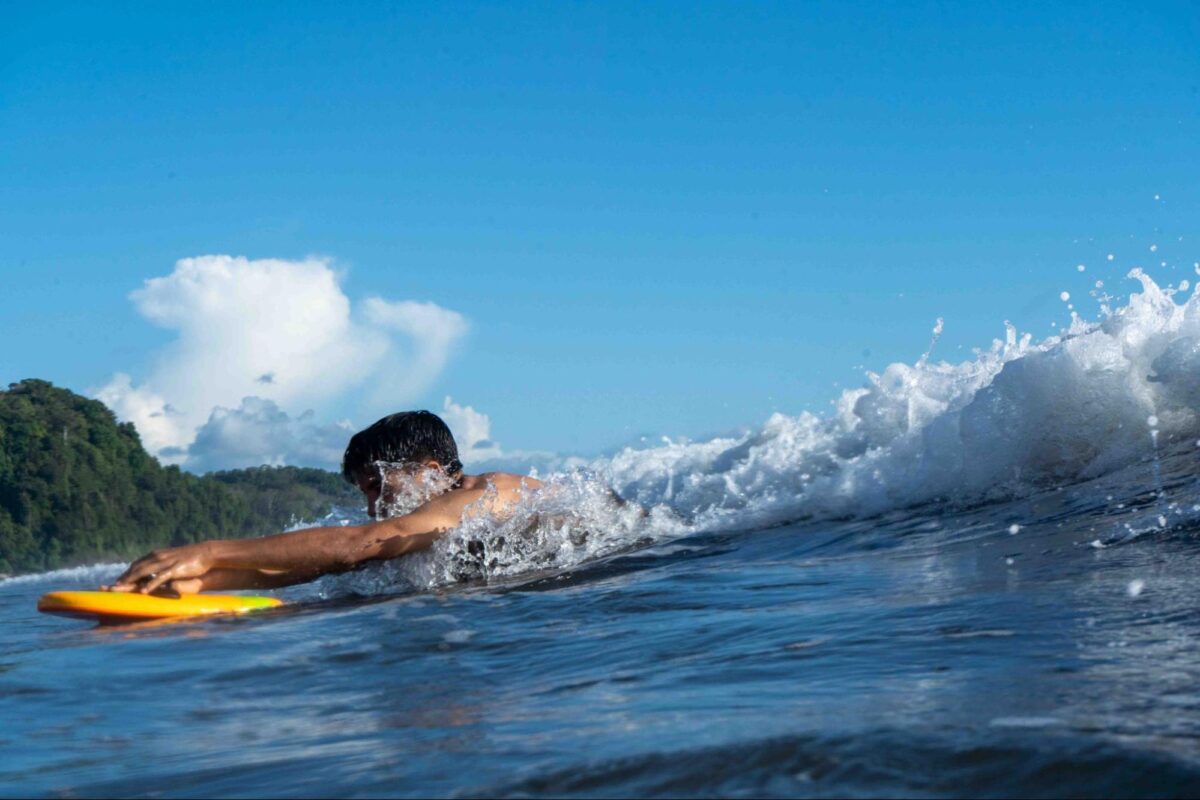
Once you make it out to the green wave zone, you can rest and recover by floating on your back. Then, continue to tread water with your eyes on the horizon and wait for a surfable wave to arrive.
As the wave approaches, you can kick yourself into position using a sidestroke with the handboard extended out in front of you. Continue to watch the wave over your shoulder as you position yourself in front of the oncoming wave.
Before the wave gets to you, reach the handboard out in front of your body and begin kicking one foot at a time with your swim fins at the surface of the water.
Allow the wave to pick you up, and then kick hard down the slope of the wave and extend your body into the streamline position as you ride to the beach.
With enough practice, you will learn how to read waves and determine which direction they are going to break (right vs. left). Now you can practice lengthening your ride by gliding across the wave face, rather than riding straight to the beach.
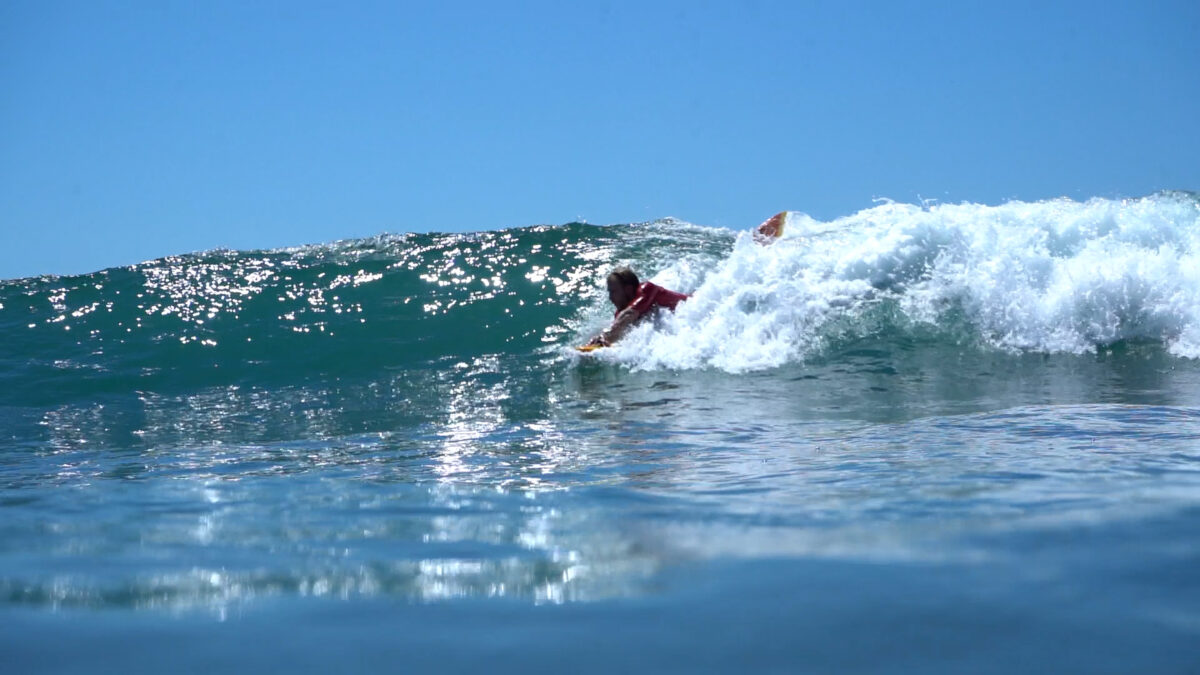
As the wave picks you up, angle your body in the direction you want to go and plane off your lead hand while kicking hard into the wave with your fins.
Bring your free hand on top of the handboard once you have caught the wave and push down on the board to lift your chest and head higher out of the water.
Look in the direction you want to go (right or left) as you guide the handboard across the face of the wave. Don’t forget to smile and enjoy the ride!

